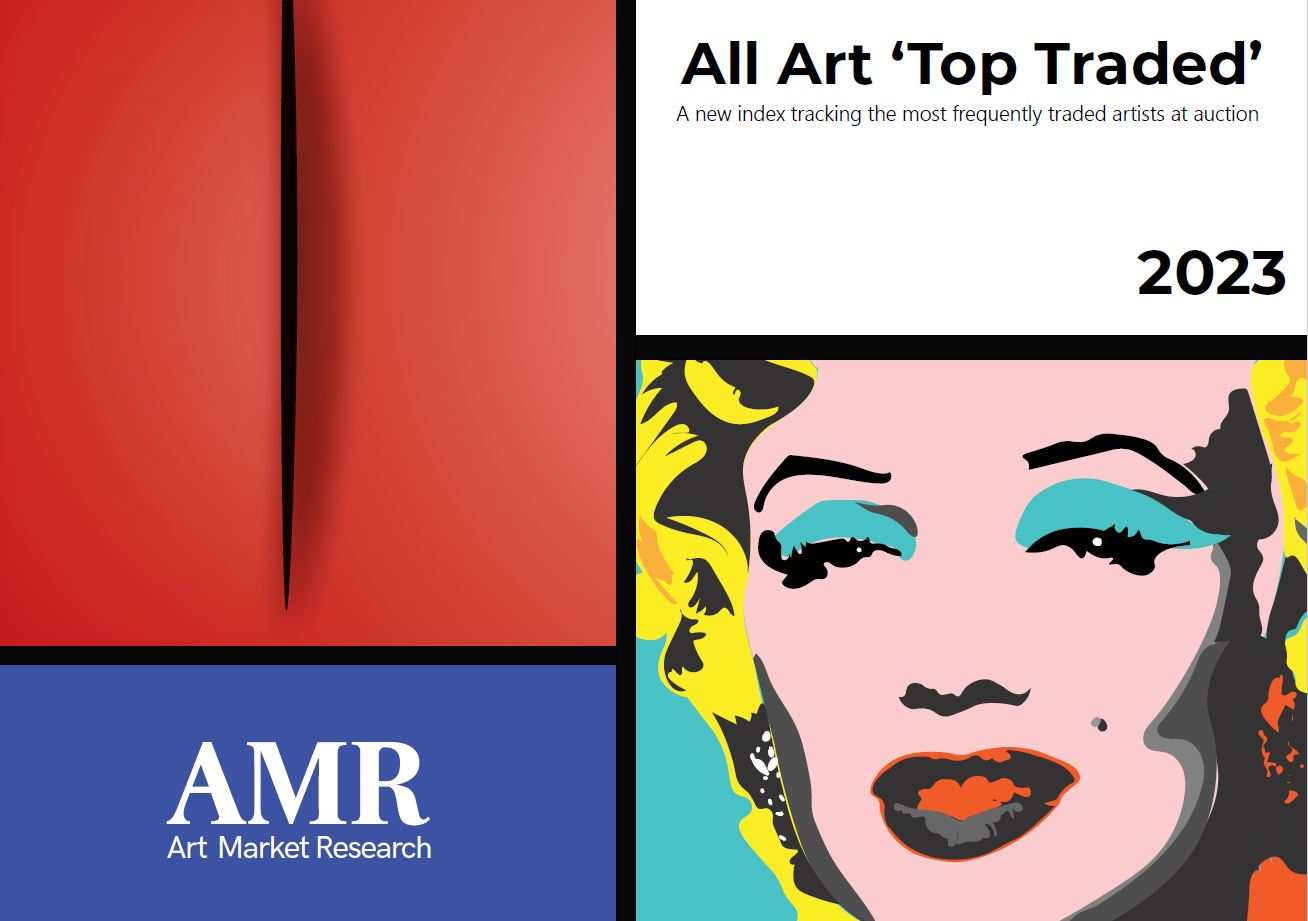All Art
Using global sales data from public auction, AMR’s All Art indexes track the behaviour of collectors.

Who are the Top Traded Artists?
Download AMR All Art ‘Top Traded’ 2023 Report
How is the All Art calculated?
To construct the All Art index, AMR records sales at auction every month and uses the price data to determine an average value for all artists in AMR’s database. This value is called the Artist Price (AP) and these APs are combined to produce the All Art chart.
For a full explanation of how the All Art has been constructed, including the methodology, visit All Art Methodology
What does 'Top Traded' mean?
The All Art Top Traded index is based on the same algorithm used by the All Art. The difference is that the Top Traded index narrows the number of ‘Artist Prices’ to focus on the most liquid sector of the auction trade.
To construct the All Art index, AMR records sales at auction every month and uses the price data to determine an average value for all artists in AMR’s database. This value is called the Artist Price (AP) and these APs are combined to produce the All Art chart. The All Art algorithm also calculates the monthly number of sales for each artist in AMR’s database. The list of artists is then divided into three categories according to the frequency their works appear at auction: F= Frequent, M = Medium and R = Rare. Most artists in a sample window are categorised as ‘rare’ due to limited lots sold at auction. This rare class includes some of the rarest and most expensive works, so it is desirable to include these in an art price index. The alternative All Art TT index excludes all ‘rare’ artists for those who feel all sufficiently thinly-traded artists should not feature due to the sparsity of sales.
All Art includes all three categories – F (frequent), M (medium) & R (rare).
All Art (TT) includes artists whose works have been sold on 30 occasions in a 24-month period.
For full details, visit All Art Methodology / 2.3 Top Traded
What are the 'smoothing' options?
Data smoothing refers to a statistical approach of eliminating outliers from datasets to make trends more noticeable. It is achieved using an algorithm to eliminate statistical noise from datasets. Exponential smoothing is one of many modelling techniques commonly applied to smooth data in signal processing, acting as low-pass filters to remove high-frequency noise. It can also be extended to support data with a systematic trend or seasonal component.
There is no single “right” value for smoothing. Different values were considered. A set of parameters is available with the final index to allow users to make their own choice. For more information on smoothing, visit All Art Methodology / 2.7 Smoothing.
What does UMV stand for?
To construct the All Art index, AMR records sales at auction every month and uses the price data to determine an average value for all artists in AMR’s database. This value is called the ‘Artist Price’ and Underlying Monetary Value (UMV) is the sum of Artist Prices. UMV is then rebased to 1000 in January 1978. For more information on the construction of an ‘Artist Price’ visit All Art Methodology / 3.0 Index Methodology
Where does the All Art take its sample from?
Instead of taking a sample of artists, the All Art uses a sample of auction houses. Top auction houses are selective about which works of art they take on consignment and this ‘curation’ of sales provides a basis for the list of artists tracked monthly.
AMR has selected a list of leading auction houses that sell the most valuable works of art and together represent a significant proportion of global sales by value (for a complete list of auction houses, see 3.3 Auction house list).
For more information on sampling, visit All Art Methodology/ 2.4 Sampling
Is Leonardo Da Vinci's 'Salvator Mundi' which sold at Christie's in November 2017 included in All Art the index?
No. ‘Salvator Mundi’ is a painting attributed, in whole or in part, to Leonardo Da Vinci. The work was sold for $450m in November 2017 at Christie’s auction house in New York. The attribution is currently disputed with some experts believing that the work is only partially by the hand of Da Vinci. AMR’s criteria on attribution is that if there is no clear authorship, such as ‘attributed to…’, ‘circle of…’ or ‘studio of…’ etc. then AMR does not record the sale.
Copyright © 2023 Art Market Research, All Rights Reserved
